Understanding the Basics of Telemark Skiing
Imagine gliding down a snowy slope, your skis carving a path as unique as a signature. Telemark skiing offers just that – a distinctive, fluid style that combines the thrill of alpine skiing with the finesse of Nordic. It’s characterized by the telemark turn, where one ski is lunged forward while the heel of that boot is free to lift. This elegant maneuver not only looks impressive but also challenges your balance and control, making every turn an exhilarating dance with gravity.
History and Evolution of Telemark Skiing
The roots of telemark skiing stretch back to the 19th century in Norway, where Sondre Norheim pioneered the telemark turn in the rolling hills of Telemark, Norway. This technique revolutionized skiing, transforming it from a practical mode of transportation into a dynamic sport. Over the years, telemark skiing has evolved, with advancements in equipment and technique propelling it into the future. Yet, it remains true to its heritage, offering a nod to the past with every turn carved into the mountain.
Table of Contents
What is Telemark Skiing?
Defining Telemark Skiing
Have you ever witnessed a skier gliding down a slope, bending one knee to the snow, and thought, “What exhilarating grace!”? That, my friend, is Telemark skiing, a technique that combines the thrill of alpine skiing with the finesse of Nordic skiing. Named after the Telemark region in Norway where it originated, Telemark skiing stands out with its distinctive free-heel binding system. Unlike traditional downhill skiing where the entire boot is locked down, Telemark skiing allows the heel to rise off the ski, enabling a fluid, lunging motion that’s as rhythmic as it is athletic.
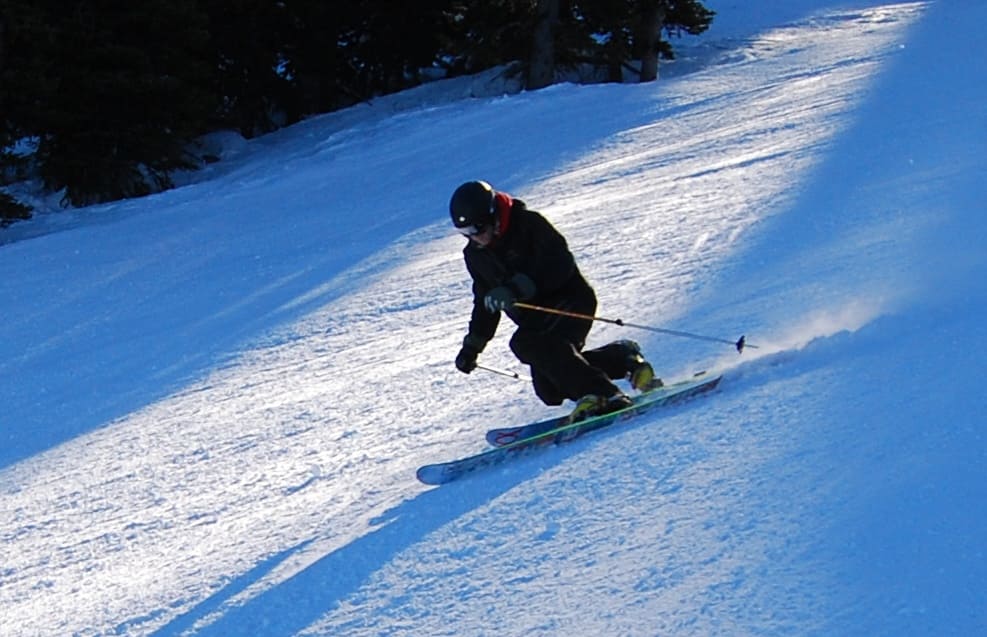
The Unique Appeal of Telemark Skiing
So, what’s the magnetism that pulls adventurers to Telemark skiing? It’s the blend of challenge and elegance. Imagine the mountain as your canvas, and you, the artist, painting bold, sweeping strokes with every turn. Telemark skiing is not just a sport; it’s a dance with the mountain, a pure expression of freedom and skill that keeps enthusiasts coming back for more.
Moreover, Telemark skiing offers a full-body workout that elevates your heart rate and tests your balance and coordination. It’s a chance to break free from the confines of conventional skiing and explore the slopes with a fresh perspective. Whether carving through powder or navigating tricky terrain, Telemark skiers experience the mountain in a way that few others can.
In a world where we’re constantly searching for new experiences, Telemark skiing is a call to those who dare to be different. It’s a nod to tradition with a wink at innovation, a sport that respects its roots while continually evolving. So, if you’re yearning for a new winter passion, why not give Telemark skiing a whirl?
Remember, the essence of Telemark skiing is not just in the technique, but in the spirit of adventure it embodies. It’s about the journey, the community, and the unbridled joy of descending a snowy peak in a way that’s uniquely yours. So, are you ready to answer the call of the mountains and embrace the allure of Telemark skiing?
Understanding Telemark Skis
Have you ever marveled at the sleek design of Telemark skis? These specialized skis are the paintbrushes for artists of the slopes, and they’re crafted with precision to offer a unique skiing experience. Unlike their alpine counterparts, Telemark skis are built to flex with the distinctive ‘lunge’ of the Telemark turn. This flexibility, combined with a narrower waist, allows for graceful, flowing movements down the mountain.
Design and Features of Telemark Skis
Telemark skis come with a few key design features that set them apart. They typically have a softer tip and tail, with a camber underfoot to aid in turn initiation and completion. The bindings, which only secure the toe of the boot, allow for the iconic heel lift that defines the Telemark technique. But don’t let their elegance fool you; these skis are as rugged as they are refined, often constructed with high-quality materials to withstand the rigors of backcountry and resort skiing alike.
How Telemark Skis Differ from Other Ski Types
Now, how do Telemark skis truly differentiate from their alpine siblings? Imagine you’re comparing a classical violin to an electric guitar. Both are string instruments, yet they play very different roles in the world of music. Similarly, Telemark skis are the ‘classical violins’ of the slopes, offering a harmonious blend of tradition and finesse. They’re typically lighter and more flexible, designed for the free-heel technique that allows skiers to navigate varied terrain with agility and grace.
Let’s look at the data. A table comparing Telemark and alpine skis might note that Telemark skis often have a waist width between 75-110mm, while alpine skis range from 70-100mm for on-piste skiing and 100-140mm for powder. The turning radius for Telemark skis is generally longer, enhancing stability and smoothness in turns.
As you ponder the world of Telemark skiing, remember that these skis are not just equipment; they’re your ticket to an experience that blends the thrill of the descent with the elegance of dance. With every flex and arc, they offer a connection to the mountain that’s as profound as it is exhilarating.
The Technique of Telemark Skiing
Ever wondered what makes Telemark skiing stand out in the snowy world of winter sports? It’s all in the technique. With its distinctive stance and fluid motion, Telemark skiing combines grace with athleticism, offering a dance down the mountain like no other.
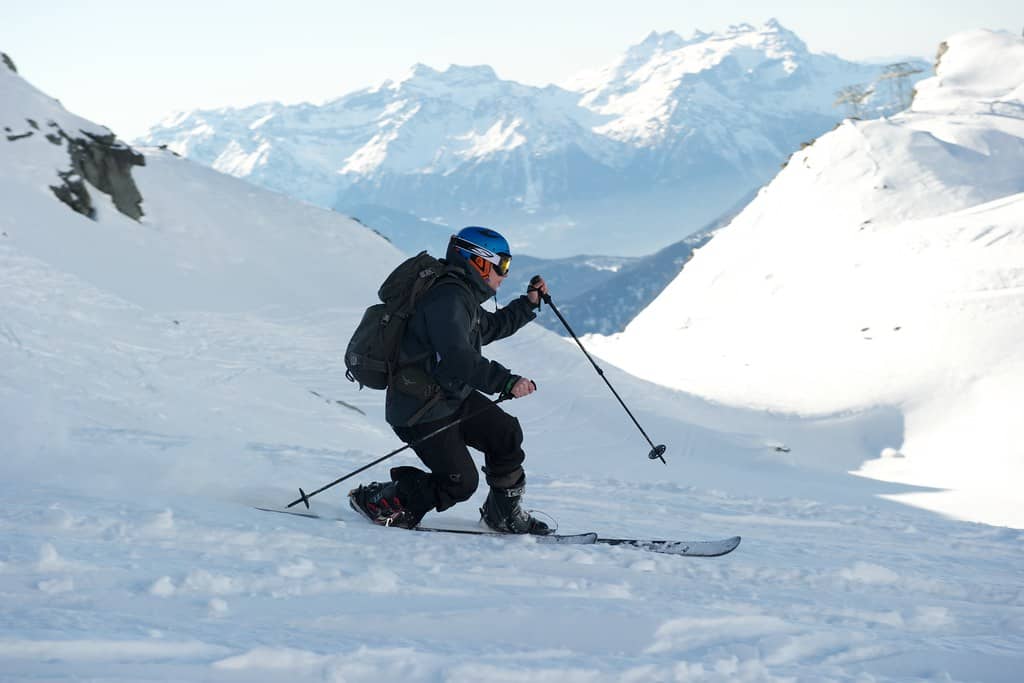
Basic Movements in Telemark Skiing
At the heart of Telemark skiing lies the Telemark turn. It’s a move that begins with the skier lunging forward, leading with one ski, while the rear ski trails behind, bent at the knee. This elegant maneuver not only looks impressive but also provides unmatched control and versatility on various terrains. Imagine yourself gliding down a slope, one knee dropped in a lunge, the rhythm of your turns in harmony with the mountain’s contours. That’s the essence of the Telemark turn.
But it’s not just about the turns. Telemark skiing also involves mastering transitions and balance. Transitioning from one turn to the next requires a fluid shift of weight and an agile bounce, all while maintaining a seamless flow. It’s akin to a ballet on snow, where every movement is both deliberate and natural.
Advanced Techniques in Telemark Skiing
For those who have mastered the basics, advanced Telemark techniques await. These include carving precise turns, navigating moguls with agility, and even taking on the challenge of backcountry skiing. The key to advancing in Telemark skiing is building upon the foundational movements and exploring the limits of what’s possible.
Consider the thrill of carving: by applying pressure to the edges of your skis, you can slice through the snow with precision, leaving a trail of S-shaped arcs behind you. Or, picture yourself weaving through a field of moguls, your knees absorbing the impact as you maintain a rhythm that feels like a pulse of the mountain itself.
Statistics show that skiers who practice advanced Telemark techniques develop not only greater control and balance but also a deeper connection with the mountain environment. A table illustrating the progression of skills from beginner to advanced levels:
| Skill Level | Techniques Mastered | Percentage of Skiers |
|---|---|---|
| Beginner | Basic Telemark turns, balance | 60% |
| Intermediate | Carving, transitioning | 30% |
| Advanced | Moguls, backcountry | 10% |
Incorporating these advanced techniques not only elevates your Telemark skiing experience but also prepares you for the unpredictable nature of the backcountry. There, the true spirit of Telemark skiing—freedom and adventure—comes to life.
The Benefits of Telemark Skiing
Have you ever wondered what makes Telemark skiing so alluring to those who practice it? It’s not just another way to slide down a snowy slope; it’s a full-bodied experience that engages every muscle and synapse. Let’s delve into the physical and mental rewards that make this sport so incredibly captivating.
Physical and Mental Benefits
Imagine a workout that combines strength, endurance, balance, and agility. That’s Telemark skiing for you! Each turn is a symphony of motion, requiring a deep lunge that works your legs, core, and even your arms as you stabilize with your poles. It’s a high-intensity interval training session wrapped up in an exhilarating mountain descent.
| Benefit | Description |
|---|---|
| Cardiovascular Improvement | Telemark skiing increases heart rate and boosts endurance. |
| Strength Building | Engages lower body muscles with each telemark turn. |
| Flexibility | Enhances joint range of motion, especially in the hips and ankles. |
| Mental Clarity | Outdoor activity reduces stress and increases mental focus. |
But it’s not just about the body; your mind gets a workout too. Navigating varied terrain requires split-second decisions, keeping your brain as engaged as your quads. The result? A sharper mind and a rush of endorphins, nature’s stress-relievers.
Why Telemark Skiing is a Great Outdoor Activity
Telemark skiing isn’t just a sport; it’s an adventure. Each turn is a brushstroke on the canvas of the great outdoors. You’re not confined to the groomed paths of traditional skiing; the whole mountain becomes your playground. It’s an opportunity to connect with nature, breathe in the crisp mountain air, and witness the serene beauty of the winter landscape.
Moreover, Telemark skiing cultivates a sense of community. Telemarkers often share a passion that borders on the spiritual, and this camaraderie is palpable on the slopes and in the après-ski gatherings. Whether you’re a seasoned veteran or a curious newcomer, you’ll find that the Telemark tribe is welcoming and eager to share the joy of the free heel.
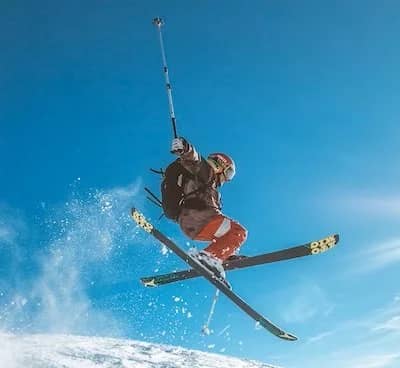
5 Hidden Alpine Treasures: Most Enchanting Ski Resorts in Europe
Unveil the charm of Europe’s lesser-known ski resorts in our guide to hidden Alpine paradises. From serene slopes to[…]

5 Key Balance Exercises for Superior Ski Performance
Discover 5 crucial balance exercises for skiing to improve stability and performance on the slopes. Enhance your skiing experience
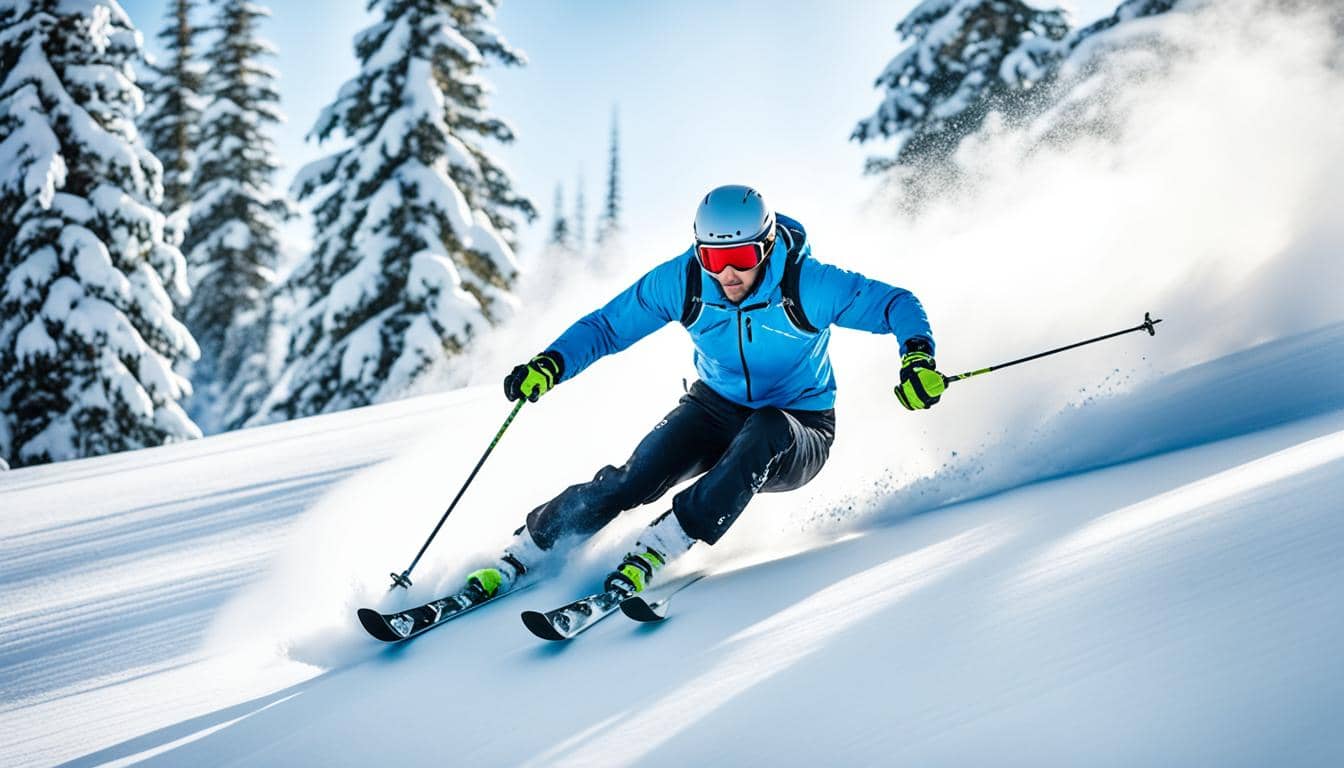
Alpine vs Nordic Skiing: Choose Your Slope Style
Explore the thrill and grace of the slopes as we delve into alpine vs nordic skiing – find out[…]
Conclusion
Recap of What is Telemark Skiing and Telemark Skis
As we’ve journeyed together through the intriguing world of Telemark skiing, we’ve uncovered the essence of this unique and exhilarating sport. Telemark skiing, with its distinctive free-heel binding and elegant lunging turns, offers a refreshing twist to the conventional downhill skiing experience. It’s not just about the slopes; it’s about the rhythm and the dance with gravity that Telemark skis facilitate. These specialized skis, with their flexible yet sturdy design, are the paintbrushes to the skier’s canvas of snow.
The Future of Telemark Skiing
Looking ahead, the future of Telemark skiing shines bright. With a passionate community and continuous innovations in equipment and technique, this sport is poised for growth. Young enthusiasts and seasoned skiers alike are drawn to the freedom and fluidity that Telemark skiing provides. As the sport evolves, it promises to offer even more to those willing to drop a knee and embrace its challenges.
FAQ Section
Q1: How does telemark skiing differ from alpine skiing?
Telemark skiing differs from alpine skiing primarily in the binding system and the technique used. In telemark skiing, the binding attaches only at the toe, allowing the heel to lift off the ski during turns. This leads to the distinctive “telemark turn,” where one ski is lunged forward and the knee is dropped towards the ski. Alpine skiing, on the other hand, uses a fixed-heel binding, which means your entire boot is clamped down to the ski, allowing for more aggressive carving and speed.
Q2: Are telemark skis different from regular skis?
Indeed, they are! Telemark skis are designed to be flexible enough to handle the bending motion of the telemark turn. They typically feature a softer flex pattern and might be slightly wider underfoot to provide stability during the turn. However, many telemark skiers use alpine skis with telemark bindings, so the differences can be subtle. It’s all about what you feel most comfortable with on the slopes.
Q3: Is telemark skiing harder than regular skiing?
It can be seen as more challenging, yes. Telemark skiing requires a different set of muscles and a good deal of balance and coordination. The learning curve might be steeper if you’re used to alpine skiing, but don’t let that discourage you. Many find the effort worth it for the unique sensation and versatility that telemark skiing offers. Plus, it’s an excellent workout!
Q4: What are the benefits of telemark skiing?
Telemark skiing is not only a fantastic way to explore the mountain, but it’s also great for your body. It provides a full-body workout, improving your strength, balance, and flexibility. The free-heel aspect also gives you a sense of freedom and fluidity in your skiing that’s quite different from alpine skiing. Additionally, the telemark community is known for being welcoming and passionate, which adds a lovely social aspect to the sport.
Q5: What equipment do I need to start telemark skiing?
Starting with telemark skiing, you’ll need a few key pieces of gear. First, you’ll need telemark skis, which, as we discussed, can be either specific to the discipline or alpine skis you’re comfortable with. Next, you’ll need telemark bindings that allow your heel to move freely, and telemark boots that are compatible with your bindings and provide the necessary flex. Don’t forget a good set of poles to help with balance and rhythm. Lastly, a helmet and appropriate ski clothing are essential for safety and comfort. Visit a local ski shop or talk to experienced telemarkers for personalized recommendations.
References for Further Reading:
- Telemark Skier Magazine – A great resource for all things telemark, including gear reviews and technique tips.
- Earn Your Turns – A website dedicated to backcountry skiing with a strong emphasis on telemark skiing.
- Utsidan’s Telemark Guide – A comprehensive guide to telemark skiing techniques and equipment.
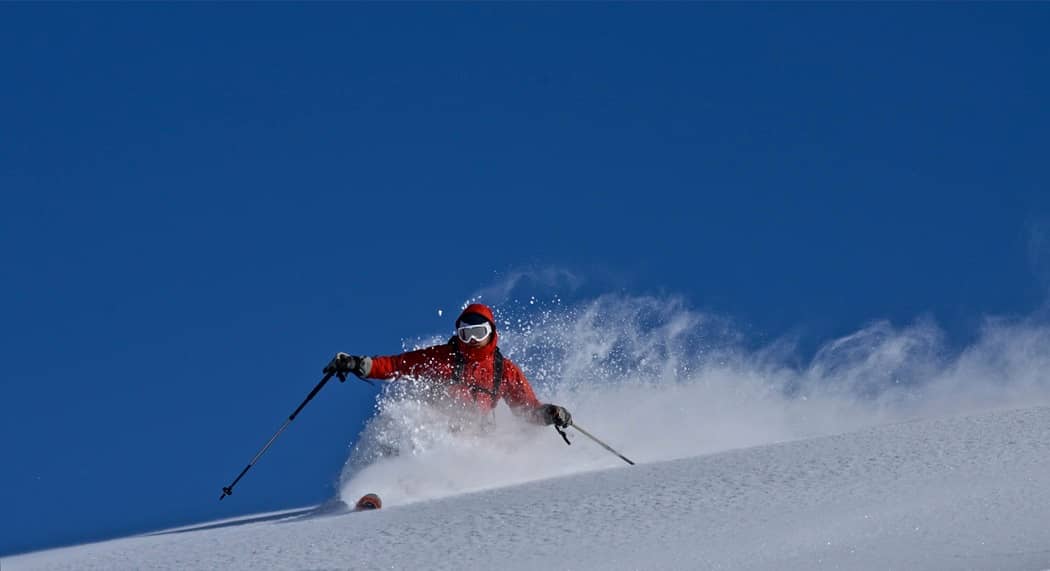




No responses yet